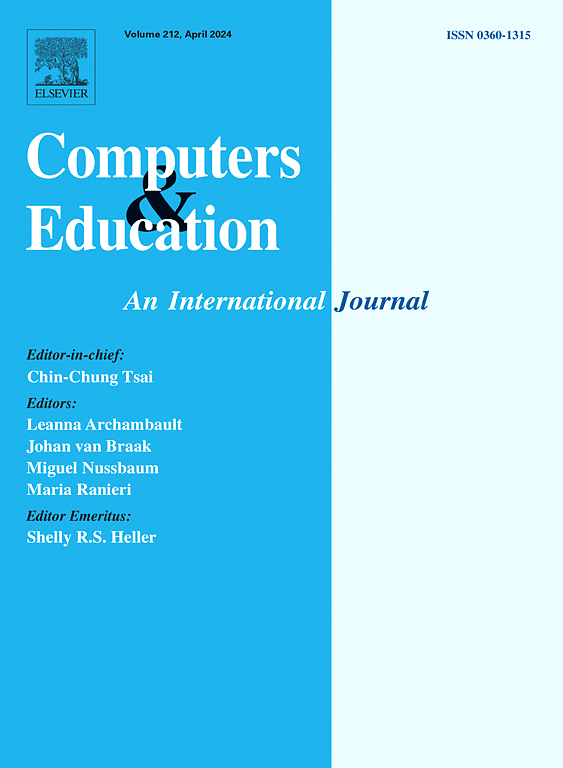Analytics of Learner-Centered Feedback: A Large-Scale Case Study in Higher Education
IF 10.5
1区 教育学
Q1 COMPUTER SCIENCE, INTERDISCIPLINARY APPLICATIONS
引用次数: 0
Abstract
Feedback plays a crucial role in guiding students towards achieving their learning goals. The conceptualization of feedback has shifted from teacher-centered to learner-centered approaches, underscoring the evolving role of educators and students in educational settings. Despite the growing emphasis on learner-centered feedback frameworks, there remains a gap in understanding how these frameworks are implemented in actual teaching practices. This case study addresses this gap by examining the alignment of current feedback practices with learner-centered feedback principles in the Computer Science School at an Australian higher education. We gathered feedback data from the Master of Data Science and Bachelor of Computer Science program that were communicated through the Learning Management System. The dataset included feedback from 4959 students, provided by approximately 200 instructors across 95 courses. To ensure a representative sample, 10% of feedback entries from each course were analyzed, resulting in 16,408 feedback sentences. The findings reveal a pronounced emphasis on the sensemaking dimension, particularly in evaluating students’ strengths and weaknesses to help them understand their performance. Feedback patterns varied by student performance, with high achievers receiving affirmations, medium achievers receiving actionable suggestions, and low achievers receiving comprehensive evaluations. Feedback in the Master’s program prioritized future impact by offering actionable guidance for advanced tasks, while the Bachelor’s program emphasized fostering agency through active student engagement and participation.
以学习者为中心的反馈分析:高等教育的大规模案例研究
反馈在引导学生实现学习目标方面起着至关重要的作用。反馈的概念已经从以教师为中心转向以学习者为中心的方法,强调了教育工作者和学生在教育环境中不断发展的作用。尽管越来越强调以学习者为中心的反馈框架,但在理解这些框架如何在实际教学实践中实施方面仍然存在差距。本案例研究通过检查当前反馈实践与澳大利亚高等教育计算机科学学院以学习者为中心的反馈原则的一致性,解决了这一差距。我们收集了数据科学硕士和计算机科学学士课程的反馈数据,这些数据通过学习管理系统进行交流。该数据集包括95门课程中约200名教师提供的4959名学生的反馈。为了确保样本的代表性,我们对每门课程反馈条目的10%进行了分析,得到了16408个反馈句子。研究结果显示,学校非常强调语义维度,尤其是在评估学生的优缺点以帮助他们理解自己的表现方面。反馈模式因学生的表现而异,成绩好的学生会得到肯定,成绩中等的学生会得到可行的建议,成绩较差的学生会得到综合评价。硕士课程的反馈通过为高级任务提供可操作的指导来优先考虑未来的影响,而学士课程强调通过积极的学生参与和参与来培养代理。
本文章由计算机程序翻译,如有差异,请以英文原文为准。
求助全文
约1分钟内获得全文
求助全文
来源期刊

Computers & Education
工程技术-计算机:跨学科应用
CiteScore
27.10
自引率
5.80%
发文量
204
审稿时长
42 days
期刊介绍:
Computers & Education seeks to advance understanding of how digital technology can improve education by publishing high-quality research that expands both theory and practice. The journal welcomes research papers exploring the pedagogical applications of digital technology, with a focus broad enough to appeal to the wider education community.
 求助内容:
求助内容: 应助结果提醒方式:
应助结果提醒方式:


